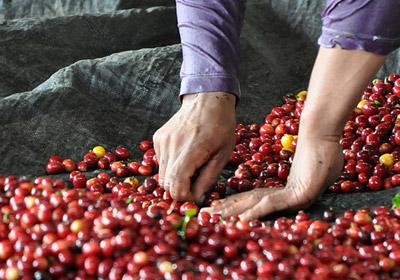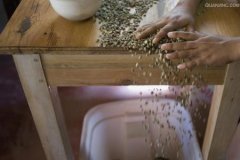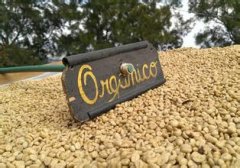A brief introduction to the market price of Kenyan boutique coffee beans with rich taste

In addition to having obvious and charming fruit acidity, because most Kenyan coffee comes from small coffee farmers who know how to brew coffee and do not know how to taste coffee, then the original delicacy may also become tasteless. Some people taste coffee with the taste of the tongue, while others enjoy the aromatic mellow in the mouth. in addition, it depends on the condition of the body and the atmosphere around the coffee. In a word, tasting coffee is a very delicate thing.
When you drink coffee in a coffee shop, you sometimes drink almost half-cold coffee. No matter how good the coffee beans are and how good the brewing skills are, you will lose your appetite for coffee. Drinking while it is hot is a necessary condition for tasting delicious coffee, even on a hot summer day. When the coffee is cold, the flavor will decrease, so when brewing the coffee, in order not to reduce the taste of the coffee, soak the coffee cup in boiling water in advance. The appropriate temperature for coffee is 83 degrees Celsius at the moment of brewing, 80 degrees Celsius when pouring into the cup, and 61-62 degrees into the mouth.
On the contrary, hand flushing is popular in China. The water is also injected at the central point, but the flood flows around 2-3 times, and the water in the powder layer is saturated. The large current has a great impact on the powder layer, and many people do not dare to go to the extreme edge, so they can only circle around the center point and the middle part of the filter cup wall. the large water flow will quickly push up the powder layer, and some of the steaming powder layer on the far side will be relatively dry relative to the central point, resulting in insufficient extraction. (taste trend: the first taste of drinking coffee is included in, and the coffee liquid flows directly down to the throat, resulting in a strong taste and easy to have raw and mixed smell.)
A total of six concentric circles are needed at this stage. After the smallest flow of water is injected into the center point by hand for 2 seconds, the concentric circle is around the first circle, and then each concentric circle is enlarged 1 turn accordingly. To the fifth concentric circle, about 12.5px away from the wall of the filter cup, all powder layers will be wet to water and washed away. Then, go back to the fourth concentric circle. The third stage will explain in detail how to circle the third lap.
After circling 6 concentric circles, the electronic claim will show that the amount of water is about 70-80 grams (including 31.8 grams of water used for steaming). If it exceeds 80 grams, the flow is too large, and you must practice the smallest flow and circle it. Use this thin water to slowly circle and disperse the powder layer formed by steaming, and all the powder is wet to the water, determining the direction of the taste. The first feeling of drinking coffee is that the taste is distributed to the whole mouth, and every taste bud can feel the coffee, which can improve the cleanliness and sweetness.) This stage of the flow requirements is the lowest, even if you break the flow does not affect the taste, as long as it can be wet to all the powder. If the filter paper is washed on the filter paper during the circle at this stage, the water on the filter paper will be absorbed by the powder layer, because when the fine water flows around, the water absorption rate of the powder layer is slow and the water in the powder layer is not saturated.
There are two types of coffee farms in Kenya. One is a large plantation that covers an area of more than five acres, but the average elevation is low. In the case of Kenyan coffee, the coffee beans of the large farms are of medium quality. The best Kenyan beans come from small farms, most of which are located in the foothills or volcanic slopes above 5,000 to 6,000 feet. Each small farmer has a capacity of only 20 to 70 bags per season and cannot afford to invest in expensive washing plants, but small farmers are very United. Hundreds or thousands of households are gathered to set up a cooperative farm, which is funded by the government to build a washing treatment plant, and the coffee fruits picked by small farmers are sent to the cooperative farm for unified processing. First remove the half-ripe or rotten fruit, then peel, ferment, decompose the flesh, remove the coffee beans, then dry and polish them, the whole process is supervised by the official Coffee Administration.
Aromatic, full-bodied, with fruit flavor, taste rich and perfect. Kenyan coffee has a wonderful fruit flavor, tastes like BlackBerry and grapefruit, and is a favorite of many coffee gluttons. This coffee has an excellent medium purity, crisp and refreshing taste. It has a fresh flavor and is most suitable for drinking iced coffee in summer. When tasting this coffee, if it is paired with sour fruits such as grapefruit, it will certainly give me the best coffee experience. "not much like coffee, but a bit like fruit tea" is the common feeling of many people about this kind of shallow roasted Kenyan coffee.
Important Notice :
前街咖啡 FrontStreet Coffee has moved to new addredd:
FrontStreet Coffee Address: 315,Donghua East Road,GuangZhou
Tel:020 38364473
- Prev

A brief introduction to the history and culture of the origin and development of Kenyan boutique coffee beans
Although the coffee auction system has effectively raised the price of high-quality coffee, it is not without drawbacks. First, the existence of many trade middlemen has eroded the interests of coffee farmers, and the high prices obtained from the auction can not be fully fed back to the hard-working coffee farmers. Second, it is difficult to accurately trace the production information of the auctioned coffee. For the increasingly prosperous boutique coffee market, traceability is the coffee raw bean review.
- Next

A brief introduction to the cultivation of glossy Kenyan boutique coffee beans, geographical location, climate and altitude
Some buyers of Kenyan coffee, especially Japanese businessmen, have expressed dissatisfaction with the Kenyan coffee industry system. Some businessmen say that the quality of coffee in the country has declined, and point out that buying directly from farmers may be a way to improve the quality. But in any case, Kenya's detailed rules and regulations and sound procedures are worthwhile for all coffee-producing countries.
Related
- Detailed explanation of Jadeite planting Land in Panamanian Jadeite Manor introduction to the grading system of Jadeite competitive bidding, Red bid, Green bid and Rose Summer
- Story of Coffee planting in Brenka region of Costa Rica Stonehenge Manor anaerobic heavy honey treatment of flavor mouth
- What's on the barrel of Blue Mountain Coffee beans?
- Can American coffee also pull flowers? How to use hot American style to pull out a good-looking pattern?
- Can you make a cold extract with coffee beans? What is the right proportion for cold-extracted coffee formula?
- Indonesian PWN Gold Mandrine Coffee Origin Features Flavor How to Chong? Mandolin coffee is American.
- A brief introduction to the flavor characteristics of Brazilian yellow bourbon coffee beans
- What is the effect of different water quality on the flavor of cold-extracted coffee? What kind of water is best for brewing coffee?
- Why do you think of Rose Summer whenever you mention Panamanian coffee?
- Introduction to the characteristics of authentic blue mountain coffee bean producing areas? What is the CIB Coffee Authority in Jamaica?

